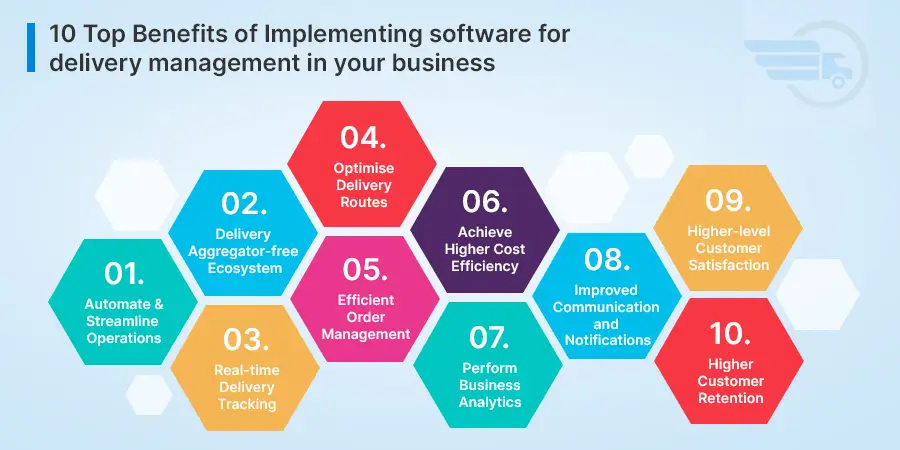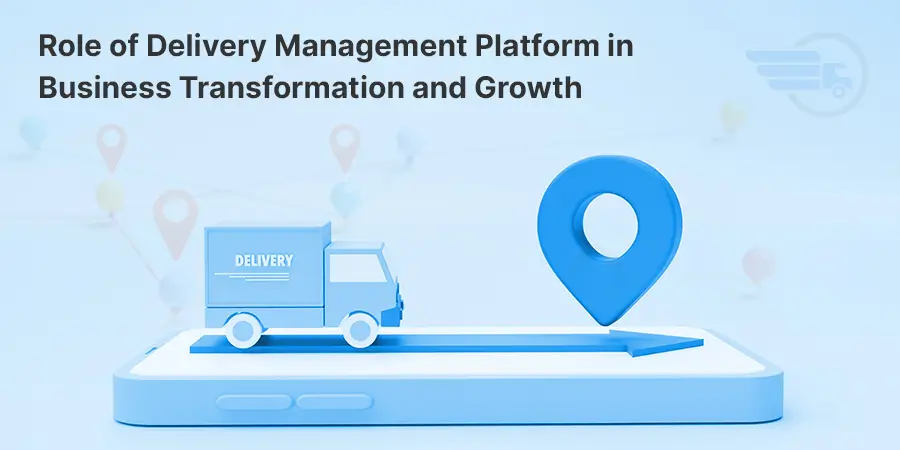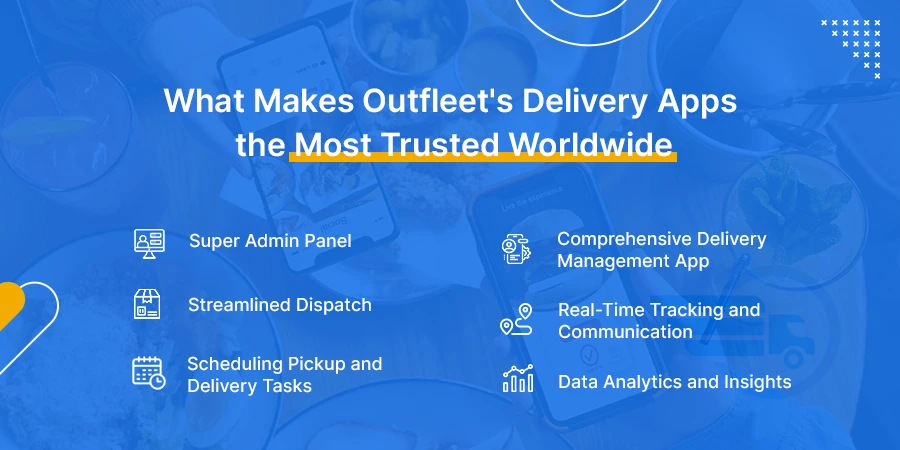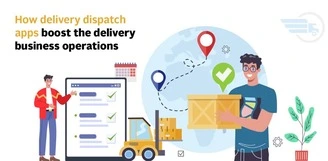Order and Delivery Management Software: How it Streamlines Delivery Operations
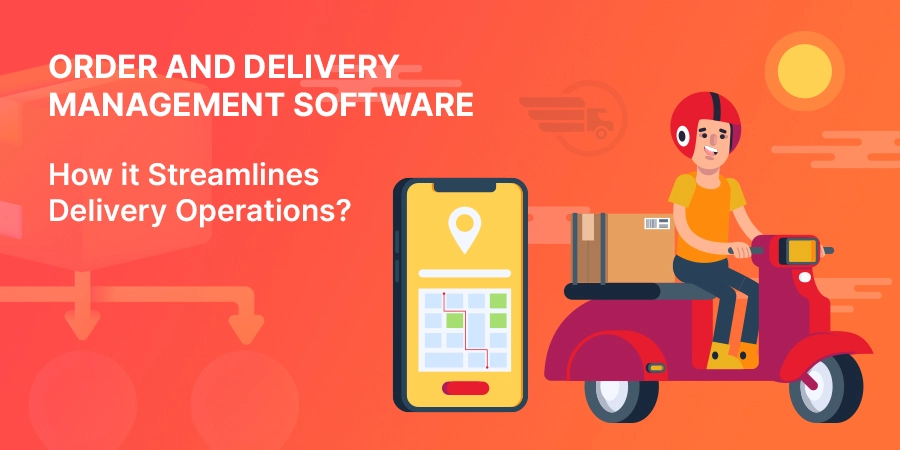
In today's fast-paced business landscape, managing orders and deliveries efficiently is paramount to ensuring customer satisfaction and maintaining a competitive edge. This is where Order and Delivery Management Software steps in as a crucial tool that enables businesses to streamline their operations, enhance customer experiences, and optimize resource utilization. In this blog, we'll dive into what it is and how it works, shedding light on its significance in modern business processes.
Understanding Order and Delivery Management Software
It's a comprehensive solution designed to automate and optimize the entire order-to-delivery process, encompassing order placement, inventory management, route optimization, and real-time tracking.
The software operates on a centralized database where all order-related information, inventory levels, customer details, and delivery schedules are stored. This eliminates data silos and ensures seamless information flow.
Order and Delivery Management Software is a comprehensive solution that comprises various components to facilitate the seamless handling of orders and deliveries throughout the entire process. Each component plays a vital role in ensuring the efficient functioning of the software.
Let's delve into the different components that make up this software:
Order Capture: This component enables customers to place orders through multiple channels, such as websites, mobile apps, or in-store kiosks. It ensures that order information is accurately captured and transmitted to the system.
Order Validation: This component verifies the accuracy and completeness of the order details, such as items, quantities, and delivery addresses, to prevent errors.
Inventory Tracking: This component tracks real-time inventory levels, updating them whenever an order is placed or fulfilled. It helps in maintaining optimal stock levels and preventing stockouts.
Route Planning: This component calculates the most efficient delivery routes based on factors like delivery location, traffic conditions, and delivery time windows.
Optimization Algorithms: Algorithms within this component help in determining the best sequence for multiple deliveries, minimizing travel time and fuel costs.
Real-time Tracking: This component provides customers with the ability to track their orders in real time through interactive maps or status updates.
Communication Hub: Enables automated communication between the system, customers, and delivery personnel through notifications and alerts.
The delivery management software automatically assigns delivery tasks to available drivers based on factors like their location, availability, and delivery urgency. Ensures that delivery tasks are evenly distributed among drivers to optimize resource utilization. collects and analyses data related to order volumes, delivery times, driver performance, and customer feedback.
It generates comprehensive reports and dashboards that provide insights into key performance metrics, helping businesses make informed decisions. Integrates with Enterprise Resource Planning (ERP) systems to ensure a seamless flow of order and inventory data. Integrates with Customer Relationship Management (CRM) systems to consolidate customer information and enhance customer experience. This component facilitates secure online payment processing, ensuring a smooth and secure transaction experience for customers.
The order and delivery management software maintains comprehensive profiles for customers, including order history, preferences, and contact information. Enables businesses to engage with customers through personalized communication, order updates, and feedback collection. The software manages the process of handling product returns, including return requests, return labels, and refund processing. It can further handle other predefined tasks such as refund handling for example.
Benefits of Order and Delivery Management Software
Real-time tracking and timely deliveries contribute to a positive customer experience, leading to customer loyalty and repeat business. Real-time tracking offers a multitude of benefits that revolutionize the way businesses handle their logistics. It leverages technology to provide constant updates and insights into the whereabouts of shipments, enhancing transparency, efficiency, and customer satisfaction.
Customers can track their deliveries in real time through interactive maps or status updates, alleviating the uncertainty associated with delivery times. This level of transparency not only fosters trust but also empowers customers to plan their schedules accordingly, leading to greater convenience.
From a business perspective, real-time tracking enables proactive problem-solving. If a delivery encounters unexpected delays due to traffic, weather, or other factors, the delivery management team can promptly communicate these issues to the customer, managing expectations and minimizing dissatisfaction. Moreover, businesses can monitor the movement of their delivery vehicles, allowing for efficient route adjustments, minimizing fuel consumption, and reducing operational costs.
Real-time tracking also facilitates efficient resource allocation. Delivery managers can optimize routes, reassign tasks, and make on-the-fly decisions based on accurate location data. This ensures that deliveries are assigned to the nearest available drivers, maximizing their productivity while minimizing transit times.
How Order and Delivery Management Software Works
Here following is a step-by-step guide to how the software works.
In the digital age, where convenience and efficiency are paramount, businesses are increasingly turning to technology to streamline their operations. One crucial aspect of this transformation is the seamless handling of orders, from placement to processing, through sophisticated solutions like order and delivery management software. This software plays a pivotal role in ensuring that orders are accurately captured, efficiently processed, and seamlessly integrated into the delivery ecosystem.
Order Capture and Input
The process commences when a customer places an order, which can be initiated through various channels such as e-commerce websites, mobile apps, or in-store kiosks. It serves as the central hub where these orders are captured and consolidated. Customers input their order details, which typically include the items they wish to purchase, quantities, delivery address, and any specific preferences. This information is crucial as it forms the foundation for the subsequent processing steps.
Order Validation and Verification
Upon receiving an order, the software performs thorough validation and verification checks to ensure that the provided information is accurate and complete. This step is essential to prevent errors, such as incorrect item selections, improper quantities, or incomplete delivery addresses. Any inconsistencies or anomalies are flagged for review, prompting the customer or customer service personnel to rectify the issues before proceeding.
Inventory Integration and Availability Check
Once an order passes the validation stage, the software integrates with the business's inventory management system. This integration is crucial for real-time updates on stock availability. The software queries the inventory database to verify whether the ordered items are in stock. If items are out of stock, the system can offer alternatives or provide estimated restocking times to the customer. On the other hand, if items are available, the software ensures that the inventory is updated to reflect the impending deduction.
Order Confirmation and Communication
With inventory availability confirmed, the software generates an order confirmation, which is relayed to the customer through automated communication channels such as email, SMS, or mobile notifications. This confirmation provides the customer with a summary of their order, including items, quantities, prices, and estimated delivery times. This step not only assures customers that their order has been received but also establishes a sense of trust and transparency.
Integration with Delivery Logistics
Simultaneously, the confirmed order is seamlessly integrated into the larger delivery logistics ecosystem. The software assigns the order a unique identifier and allocates it to a delivery route or schedule. This integration ensures that the order is aligned with the operational plan and resources available for delivery, such as drivers, vehicles, and delivery time windows.
Payment Processing
For orders requiring payment, the software interfaces with payment gateways to facilitate secure and seamless transactions. Customers can use various payment methods, such as credit/debit cards, digital wallets, or online banking. The software ensures that payment information is encrypted and securely transmitted, safeguarding sensitive customer data.
Order Fulfilment and Packaging
As the delivery date approaches, the software triggers the order fulfilment process. It communicates with the inventory and warehouse management systems to ensure that the ordered items are picked, packed, and prepared for dispatch. The packaging process is often integrated with the delivery logistics to ensure that items are packed according to delivery routes and optimized for safe transportation.
Order Completion and Feedback
Once the delivery is successfully completed, the software triggers order completion procedures. This might involve automated notifications confirming successful delivery and prompting customers to provide feedback. Feedback is invaluable as it allows businesses to gauge customer satisfaction, identify areas for improvement, and refine their service offerings.
In brief, the order and delivery management software streamlines the journey from order initiation to successful delivery. It combines automation, real-time updates, integration with inventory and logistics, and customer communication to create a seamless and efficient process. By orchestrating these intricate steps, businesses can not only enhance customer experiences but also achieve operational excellence in a rapidly evolving digital landscape.
Latest Posts
- Transforming E-commerce: How Seamless Order Management Enhances Customer Experience
- Fast Track Optimization: The Art and Science of the Most Efficient Route Planner
- Mastering Efficiency: The Role of Real-time Tracking Solutions in Restaurant Business
- The Future of Delivery: How Streamlined Logistics Can Transform Your Operations
- Real-time Handling: Key to Solving Dispatch Delivery Problems
- The Powerful Impact of Grocery Delivery Management System on Retail Business
- Benefits of an Automated Dispatch Software for your Business
- Six Essential Task-handling Features in Delivery Tracking System Software
- 8 Reasons to Implement Software-based Dispatch Management in this Era
- Reengineering Urban Mobility: Unveiling the Power of Dispatch Delivery Management System
